Mix and match
Here's a nice visual way to represent the cubic partial cubes derived from simplicial arrangements, that also leads to the construction of cubic partial cubes that do not derive from arrangements.
Start with a simplicial arrangement, drawn with one line at infinity:
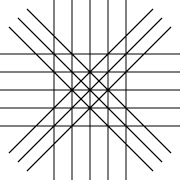
Draw the planar dual of the arrangement, as in my algorithm for drawing partial cubes as planar graphs with symmetric faces, by making a vertex for each face and connecting the vertices for adjacent faces by a unit length edge perpendicular to the line separating the faces:
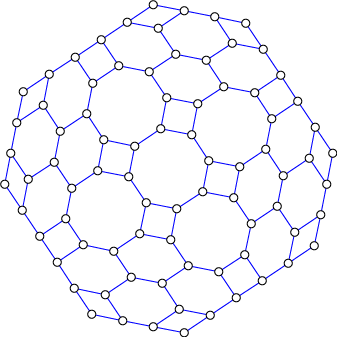
(Ignore the tilt of the drawing relative to the arrangement, it's an artifact of the fact that the program I used to make the drawing knows only the graph connectivity of the arrangement and not its actual geometry.)
Make two copies of the drawing, one copy transformed by a central symmetry from the other (this symmetry doesn't make a visible difference in our example), and connect corresponding pairs of degree two boundary vertices:
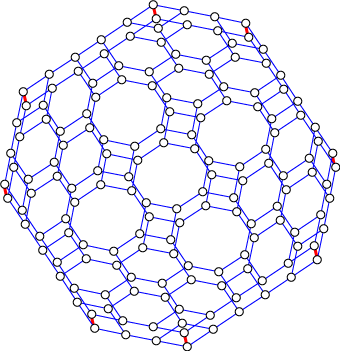
Voila, a cubic partial cube!
But wait, there's more. Here's a different simplicial arrangement, that like the first one meets the line at infinity in the same way: four pencils of parallel lines, alternating three and five lines per pencil, separated at 45 degree intervals:
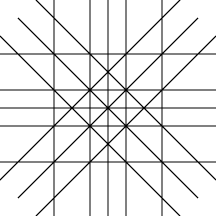
This arrangement has a dual that looks a lot like the other one, but with some middle faces rotated by 45 degrees:
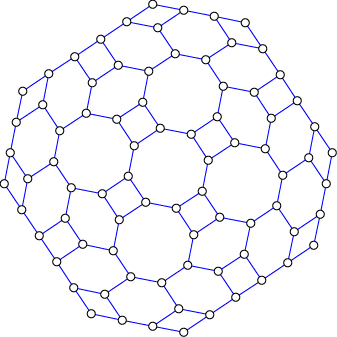
So what happens if we glue one copy of the first dual arrangement to one copy of the second?

It's also a cubic partial cube, but not one that comes from a single line arrangement! 17-dimensional hypercube labels for its 160 vertices can be found here, and the code that verifies that these labels are an isometric embedding of a cubic partial cube is here.
ETA: The simpler example shown below can be glued to a 90 degree rotated copy of itself to produce a non-arrangement cubic partial cube. Data for its 11-dimensional hypercube labels is here.

However, one must be careful, as gluing some pairs of arrangements, or rotating one side of an arrangement, can produce a graph that is not a partial cube; for instance, this happens for the 180 degree rotation of an arrangement of three lines with three crossing points (together with the line at infinity).